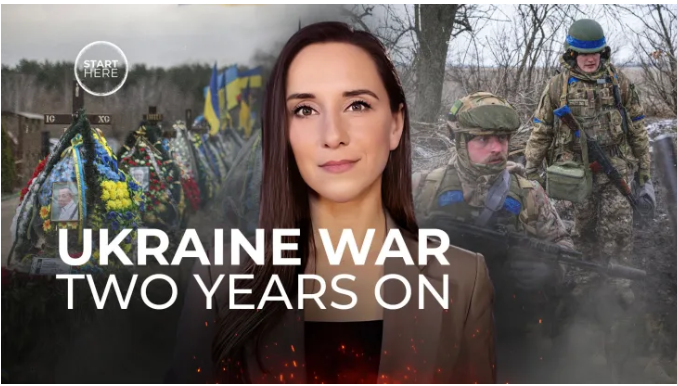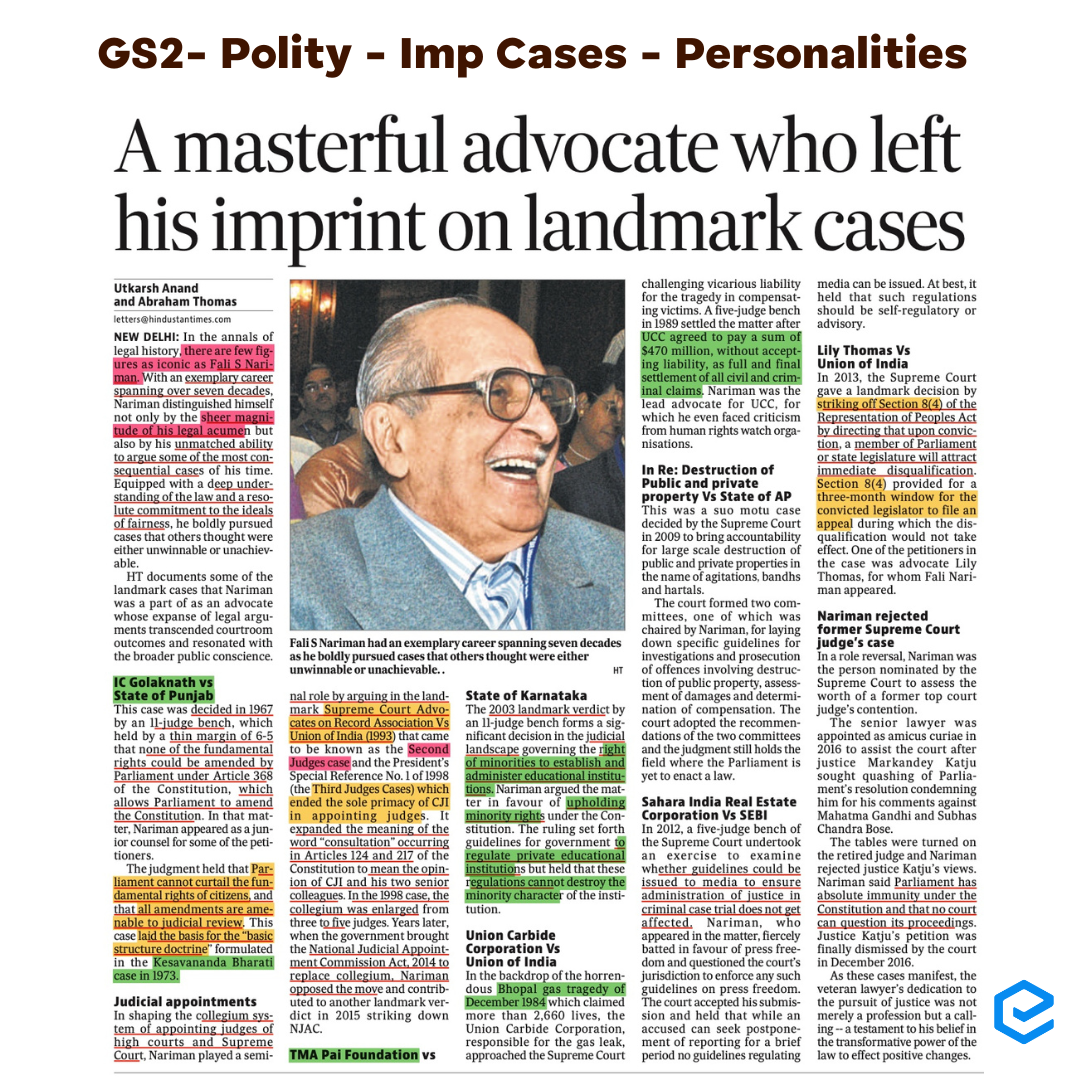Tuesday, 27th February 2024
Private Investments in India's Nuclear Energy
In News: India is poised to transform its nuclear energy sector by welcoming private companies to invest around USD 26 billion, signifying a notable departure in its energy policy.
Private Investment Initiative and India's Energy Goals
- Alignment with Targets
- India's ambitious goal of reaching 50% non-fossil fuel-based electric generation by 2030, up from the current 42%, aligns with the infusion of private investment in nuclear power.
- This initiative is crucial for transitioning to cleaner energy sources.
- Investment Negotiations
- Key players like Reliance Industries, Tata Power, Adani Power, and Vedanta Ltd. are in negotiations with the government for substantial investments, totaling around Rs 440 billion ($5.3 billion) each in the nuclear energy sector.
- The aim is to add 11,000 MW of new nuclear power generation capacity by 2040.
- Implementation Plan
- Private companies will be responsible for investing in nuclear plants, acquiring land and water, and undertaking construction activities.
- However, operational rights and fuel management will remain with the state-run Nuclear Power Corporation of India Ltd. (NPCIL).
- Private companies are anticipated to generate revenue from electricity sales.
Key Highlights of India’s Nuclear Power Sector
- Current Energy Landscape
- India's total installed power capacity is set to double to 810 GW by 2030. Nuclear power presently contributes approximately 3% to India’s energy mix.
- Current Nuclear Power Scenario
- India operates 22 nuclear power reactors with a total capacity of 6.8 GW, contributing about 3% to the nation's energy mix.
- Additional nuclear power plants under construction aim to add 8,700 MW of capacity.
- Key Players and Regulatory Environment
- The Department of Atomic Energy (DAE), Nuclear Power Corporation of India (NPCIL), and National Thermal Power Corporation (NTPC) play pivotal roles.
- Regulatory oversight is provided by the Atomic Energy Regulatory Board (AERB).
- Nuclear Liability and Insurance
- India ratified the Convention on Supplementary Compensation for Nuclear Damage (CSC) in 2016, establishing a global compensation regime.
- The Civil Liability for Nuclear Damage Act (CLND), 2010, sets liabilities, and the Indian Nuclear Insurance Pool (INIP) provides USD 15 billion in coverage.
Challenges and Opportunities
- Challenges
- Safety and Security Standards
- Nuclear Waste Management
- Land Acquisition
- Lack of Public Funding
- Opportunities
- Increase Nuclear Power's Share to 9-10%
- Opportunities for Foreign and Private Companies
- Small Modular Reactors (SMRs)
- Nuclear Energy Supporting Green Hydrogen Production
- Role in Decarbonization of the Transportation Sector
Nuclear Power's Crucial Role
- With the phasing out of old coal plants, nuclear power is positioned to play a crucial role in meeting India's rising energy demands and achieving its clean energy goals.
|
UPSC Previous Year Questions Prelims (2020) Q. In India, why are some nuclear reactors kept under “IAEA safeguards” while others are not? (a) Some use uranium and others use thorium (b) Some use imported uranium and others use domestic supplies (c) Some are operated by foreign enterprises and others are operated by domestic enterprises (d) Some are State-owned and others are privately owned Ans: (b) Explanation:
Mains (2018) Q. With growing energy needs should India keep on expanding its nuclear energy programme? Discuss the facts and fears associated with nuclear energy. |
Source: TH
Do Political Parties have to Pay Income Tax
In News: The Congress party has accused the Income Tax Department of directing banks to transfer more than Rs. 65 crores from the accounts of Congress, Youth Congress (IYC), and NSUI.
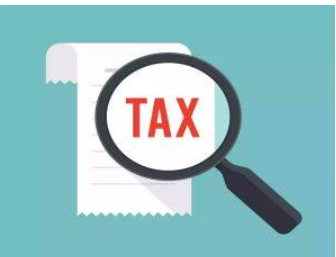
Income Tax Obligations of Political Parties
- Exemption Under the Income Tax Act
- The Income Tax Act of 1961 provides an exemption to political parties registered by the Election Commission (EC) under the Representation of the People Act 1951 from paying income tax, subject to specific conditions outlined in Section 13-A.
- Conditions for Exemption
- Political parties must maintain proper books of account for income deduction by the Assessing Officer.
- A record of all contributions exceeding Rs 20,000 each must be maintained.
- Accounts must be audited, and no donations above Rs 2,000 each in cash should be accepted.
- The treasurer or an authorized person must submit a declaration of donations to the EC before the deadline for filing Income Tax (IT) returns.
- IT Return Filing Requirement
- Political parties are obligated to file IT returns if their total income, before applying Section 13A exemptions, surpasses the IT exemption limit, as specified in Section 139 (4B). The chief executive officer of each political party must submit the return if the total income exceeds the non-taxable threshold.
Congress' Current Income Tax Dispute
- Background of the Case
- The Congress party is currently entangled in an Income Tax Appellate Tribunal (ITAT) case, challenging a Rs 210 crore tax demand for the financial year 2018-2019.
- Key Points of the Congress’ Situation
- The IT Department instructed banks to transfer Rs 65 crore even as the ITAT was deliberating on the Rs 210 crore tax demand.
- The demand is related to the financial year 2018-2019, where the party received Rs. 142.83 crore in donations, including Rs. 14.49 lakh in cash from Congress MLAs and MPs.
- The Congress’ treasurer cited a delayed submission of account details, submitted on February 2, 2019, instead of the December 31, 2018 deadline.
- The IT Department issued a demand of Rs. 210 crore, primarily over a nominal amount of Rs. 14 lakhs in cash donations, just before the 2024 Lok Sabha elections.
- The ITAT has completed its hearing, and the case awaits its order.
Source: IE
Revitalizing Senior Care: NITI Aayog's Initiatives in India
In News: Recently, NITI Aayog unveiled a position paper titled "Reimagining the Senior Care Paradigm in India," urging concerted action to address the pressing needs and challenges in the realm of senior care.
Key Report Highlights: Addressing India's Aging Population
Population Ageing
- India experiences a rising elderly population, constituting over 10% currently, projected to reach 19.5% by 2050.
Major Findings
- Demographics and Trends
- 8.6% of the population aged 60 and above in the 2011 Census.
- The elderly face a shift in disease burden due to declining mortality rates.
- Rural-Urban Divide
- 71% of elderly individuals reside in rural areas.
- Life Satisfaction
- About 32% of the elderly report low life satisfaction.
Lack of Comprehensive Policy
- Absence of a structured senior care policy leads to gaps in infrastructure, capacities, and healthcare access.
Challenges and Implications
- Aging impacts health, society, and the economy, with increasing chronic diseases and dependency ratios.
Key Recommendations of the Report
- Health Interventions
- Promote health literacy.
- Strengthen geriatric healthcare.
- Expand tele-consultation services.
- Social Empowerment
- Create awareness and peer support groups.
- Enhance legal safeguards.
- Economic and Financial Measures
- Reskill the elderly.
- Introduce mandatory savings plans.
- Implement GST reforms for senior care products.
- Digital Inclusion
- Improve digital access and literacy.
- Harness modern technology for elderly benefits.
- Silver Economy Promotion
- Encourage work opportunities for the elderly.
- Boost the "silver economy" with goods and services tailored for seniors.
Global Initiatives on Senior Care and Aging
- Vienna International Plan of Action.
- United Nations Principles for Older Persons.
- Madrid International Plan of Action on Ageing (MIPAA).
- Designation of 2021-2030 as the 'Decade of Healthy Ageing.'
Indian Government Initiatives on Senior Care and Aging
- Pradhan Mantri Vaya Vandana Yojana (PMVVY)
- Provides assured pension for senior citizens.
- Integrated Program for Older Persons (IPOP)
- Aims to improve seniors' quality of life.
- Rashtriya Vayoshree Yojana
- Offers aids to BPL senior citizens with age-related disabilities.
- SAMPANN Project
- Online pension processing for Department of Telecommunications pensioners.
- SACRED Portal for Elderly
- Connects seniors with job opportunities.
- Elder Line: Toll-Free Number
- Offers assistance on pension, medical, and legal issues.
- SAGE Initiative
- Facilitates access to elderly care products and services by start-ups.
Constitutional Provisions for Elderly Welfare
- Article 41
- Ensures the right to work, education, and public assistance, including for the elderly.
- Article 46
- Promotes the educational and economic interests of weaker sections, including the elderly.
- 7th Schedule
- State and Concurrent List items address old age pension, social security, and welfare provisions.
Conclusion
- Balancing tradition with innovation and regional diversity with national unity is crucial for a comprehensive vision of India's aging population.
|
UPSC Previous Year Questions Prelims (2008) Q. Consider the following statements with reference to Indira Gandhi National Old Age Pension Scheme (IGNOAPS):
Which of the statements given above is/are correct? (a) 1 only (b) 2 only (c) Both 1 and 2 (d) Neither 1 nor 2 Ans: (d) Mains (2019) Q. Performance of welfare schemes that are implemented for vulnerable sections is not so effective due to the absence of their awareness and active involvement at all stages of the policy process – Discuss. |
Source: PIB
Tax Devolution Status in India
In News: Numerous Indian states contend that the current tax devolution scheme does not ensure equitable distribution, asserting that their contributions to the national tax pool outweigh the returns they receive.
Tax Devolution Status in India: An Overview
Financial Devolution Explained
- Financial devolution involves the transfer of financial resources and decision-making powers from the central government to the states.
Constitutional Framework
- Article 270 of the Constitution outlines the distribution of net tax proceeds between the Union government and the States.
- The Finance Commission (FC), constituted every five years, provides recommendations for both vertical and horizontal distribution of funds.
Role of the 16th Finance Commission
- The 16th Finance Commission, chaired by Dr. Arvind Panagariya, is tasked with making recommendations for the period 2026-31.
Concerns and Challenges
- Exclusion of Cess and Surcharge: Concerns arise due to the exclusion of cess and surcharge from the divisible pool of tax revenue, affecting states' share.
- Inadequate Compensation for GST: Some states find compensation for GST implementation losses insufficient, calling for a fairer mechanism.
- Lack of Flexibility: States advocate for greater flexibility in utilizing devolved funds to address local priorities.
Way Forward
- Review of Fiscal Federalism Framework: A comprehensive review is needed to identify gaps and inefficiencies, possibly through a committee or commission.
- Performance-Based Incentives: Linking additional devolution to performance indicators could incentivize responsible resource management.
- Strengthening Institutions: Empowering institutions like the Comptroller and Auditor General of India (CAG) can ensure effective oversight and accountability in managing devolved funds.
|
UPSC Previous Year Questions Prelims (2023) Q. Consider the following:
For the horizontal tax devolution, the Fifteenth Finance Commission used how many of the above as criteria other than population area and income distance? (a) Only two (b) Only three (c) Only four (d) All five Ans: (b) Mains (2013) Q. Discuss the recommendations of the 13th Finance Commission which have been a departure from the previous commissions for strengthening the local government finances. |
Source: TH
Edwards syndrome
In News: Researchers have identified chromosomal disorders in prehistoric skeletal remains dating back around 5,500 years. These discoveries include six instances of Down syndrome and one case of Edwards syndrome.
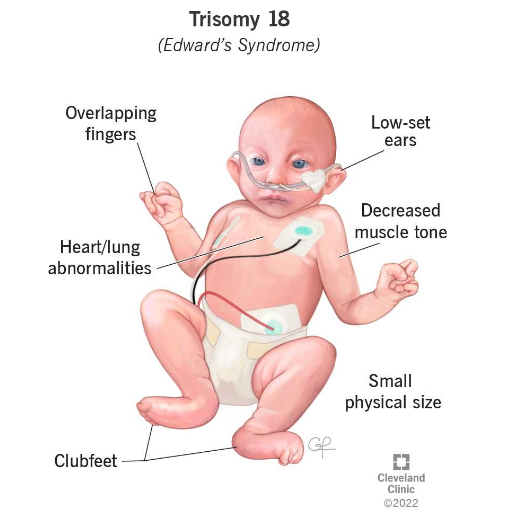
About Edwards syndrome
- Edwards syndrome, also known as trisomy 18, is an autosomal chromosomal disorder resulting from an additional copy of chromosome 18.
- This genetic condition significantly impacts a child's body development and growth, presenting as a severe disorder.
- Symptoms of trisomy 18 include low birth weight, multiple birth defects, and distinctive physical characteristics.
- There are three types of Edwards syndrome: Complete trisomy 18 (94% prevalence), Mosaic trisomy 18 (less than 5% prevalence), and Partial trisomy 18.
- In Complete trisomy 18, every cell contains three complete copies of chromosome 18, often of maternal origin.
- Mosaic trisomy 18 involves both a complete trisomy 18 and a normal cell line coexisting.
- Partial trisomy 18 entails the presence of only a partial segment of chromosome 18 in triplicate, often resulting from a balanced translocation or inversion carried by a parent.
- Treatment for trisomy 18 primarily focuses on managing symptoms such as heart conditions, breathing difficulties, and infections, as there are no specific cures for the condition.
Source: TH
SAMAR certificate
In News: Recently, nine Industry Partners received SAMAR assessment certificates from the Defence Research and Development Organisation (DRDO).
About SAMAR certificate
- SAMAR (System for Advance Manufacturing Assessment and Rating) certificate is a benchmark for evaluating the competency of defense manufacturing enterprises.
- It is a collaborative effort between DRDO (Defence Research and Development Organization) and Quality Council of India (QCI).
- The primary objective is to strengthen the defense manufacturing ecosystem in India, aligning with the vision of achieving self-reliance in defense manufacturing.
- SAMAR aims to provide an objective assessment of the manufacturing capability of defense enterprises.
- The certificate enables enterprises to benchmark their performance, focusing on various business capabilities to enhance quality, reliability, and competitiveness.
- It contributes to the creation of a credible database of defense manufacturers, facilitating ease in vendor selection and development.
- SAMAR certification is open to all defense manufacturing enterprises, including both MSMEs (Micro, Small, and Medium Enterprises) and Large enterprises.
- The validity of the SAMAR certificate is for a period of 2 years from the date of issuance.
- The certification is based on a maturity assessment model developed by QCI, applicable to defense manufacturing enterprises of all sizes.
Source: PIB
Ken River
In News: In a recent 'Mann Ki Baat' address, the Prime Minister commended the utilization of technology for wildlife conservation across various regions, citing the example of crocodile conservation in the Ken River.
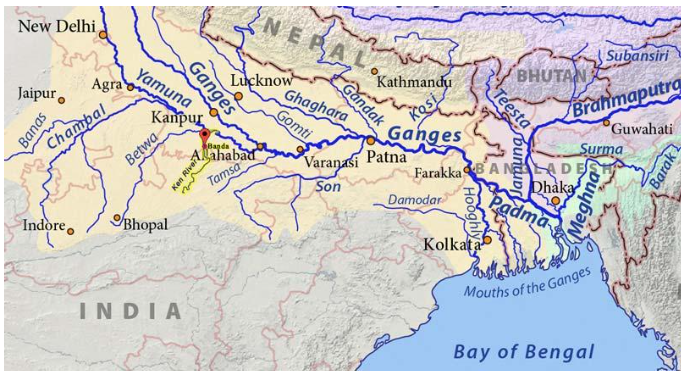
About Ken River
- Ken River is a significant river in the Bundelkhand region of central India.
- It flows through the states of Madhya Pradesh and Uttar Pradesh.
- As a tributary, it contributes to the Yamuna River, being the last one before the Yamuna joins the Ganga.
- Originating near Ahirgawan village on the northwest slopes of the Kaimur Range in Jabalpur, Madhya Pradesh.
- It carves a 60 km long, 150-180 m deep gorge while crossing the Bijawar-Panna hills, creating waterfalls with the convergence of several streams.
- The river travels 427 km before merging with the Yamuna at Chilla village, near Fatehpur in Uttar Pradesh.
- The Ken River is renowned for its rare Sajhar or Dendritic Agate stone.
- Banda city is situated on its banks.
- Major tributaries include Bawas, Dewar, Kaith, Baink, Kopra, and Bearma.
Ken-Betwa River Link Project
- The project aims to transfer surplus water from the Ken River to the Betwa River basin through a concrete canal to irrigate the drought-prone Bundelkhand region.
- It is the inaugural project under the National Perspective Plan for interlinking rivers.
- The primary goal is to provide irrigation to the Bundelkhand region, addressing severe drought issues.
- The project's benefits extend to Uttar Pradesh and Madhya Pradesh, catering to irrigation, drinking water, and electricity needs across six districts in both states.
Source: TOI
United Nations Conference on Trade and Development (UNCTAD)
In News: In a recent report, UNCTAD highlighted growing concerns about increasing disruptions in global shipping routes, sounding an alarm over the potential impact on international trade.
About United Nations Conference on Trade and Development (UNCTAD)
- The United Nations Conference on Trade and Development (UNCTAD) is the primary UN institution dedicated to trade and development matters.
- Established by the United Nations General Assembly in 1964, UNCTAD's focus is on assisting developing countries, especially the least developed and those with transitioning economies, in beneficially integrating into the global economy.
- It aims to foster a global partnership for development, enhance coherence in global economic policy making, and ensure that trade contributes to development gains for all nations.
- UNCTAD provides economic and trade analysis, facilitates consensus-building, and offers technical assistance to help developing countries utilize trade, investment, finance, and technology for inclusive and sustainable development.
- Headquartered in Geneva, Switzerland, UNCTAD's membership comprises 195 states.
- The organization's structure includes the Conference (meeting every four years), the Trade and Development Board (responsible for operations between Conferences), and the UNCTAD Secretariat (conducting policy analysis, monitoring decisions, and facilitating technical cooperation).
- Key reports published by UNCTAD include the Trade and Development Report, World Investment Report, and The Least Developed Countries Report.
Source: DTE
Ribosomes
In News: Scientists have recently employed electron microscopy to create a three-dimensional model of a segment of the human cell, specifically the ribosome.
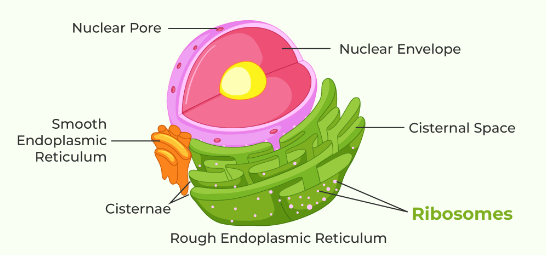
Ribosomes: Cellular Protein Factories
- Ribosomes, essential non-membrane-bound cell organelles, consist of RNA and proteins and are present in both prokaryotic and eukaryotic cells.
Distribution in Cells
- Prokaryotic Cells: Ribosomes are freely located in the cytoplasm.
- Eukaryotic Cells: Found in the cytoplasm, mitochondria, and chloroplasts.
Structure and Universality
- Structurally similar in prokaryotic and eukaryotic organisms.
- Comprising two subunits (large and small) with ribosomal RNA (rRNA) and proteins.
Primary Function - Protein Synthesis
- Complex molecular machines that facilitate protein synthesis through translation.
- Read messenger RNA (mRNA) sequences, translating genetic codes into amino acid strings.
- Proteins formed detach from the ribosome, moving to various cell parts for utilization.
mRNA (Messenger RNA)
- Single-stranded RNA involved in protein synthesis.
- Generated from a DNA template during transcription.
- Carries protein information from the DNA in the nucleus to the cell's cytoplasm for translation.
Source: PO
G-33
In News: In anticipation of the 13th ministerial conference of the World Trade Organization (WTO), a significant number of G-33 nations have urged the establishment of a lasting resolution for public stockholding concerning food security.

About G-33
- The G33, also known as the Friends of Special Products in agriculture, is a coalition comprising developing and least developed countries, currently numbering 47 member nations.
- Notable members include India, China, Indonesia, Pakistan, Nigeria, Philippines, Turkey, Tanzania, Kenya, and South Korea.
Formation and Purpose
- Established before the 2003 Cancun ministerial conference, the G33 coordinates during the Doha Round of WTO negotiations, primarily focusing on agricultural matters.
- Dominated by India, the group addresses "defensive" concerns related to agriculture in WTO negotiations, aiming to restrict market opening requirements for developing countries.
Proposed Measures
- Advocates for a "special products" exemption allowing developing countries to exclude specific products from tariff exemptions.
- Supports a "special safeguard mechanism" permitting tariff increases in response to import surges.
Key Facts about World Trade Organization (WTO)
- Created in 1995, the WTO is an international institution overseeing global trade rules among nations.
- Successor to the 1947 General Agreement on Tariffs and Trade (GATT), it is the sole global organization focusing on trade rules.
- Aims to open trade for universal benefit, with roles including operating a global trade rule system, facilitating trade agreement negotiations, settling disputes, and supporting developing countries.
Structure of WTO
- The Ministerial Conference, the top-level decision-making body, meets approximately every two years.
- The General Council, comprised of ambassadors and delegation heads in Geneva, meets regularly and functions as the Trade Policy Review Body and the Dispute Settlement Body.
- WTO agreements, negotiated and ratified by most trading nations, form the core of the organization, shaping global trade rules.
Source: LM
Advocating Regional Benches for Supreme Court Reform
In News: A recent article delves into the suggestion put forth by a parliamentary committee supporting the creation of regional benches for the Supreme Court.
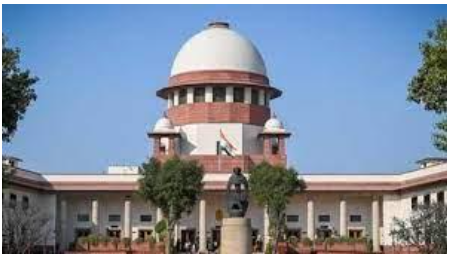
Differing Legal Perspectives on Supreme Court Regional Benches in India
- Article 130 of the Indian Constitution
- The Indian Constitution's Article 130 designates Delhi as the primary seat for the Supreme Court, giving the Chief Justice of India the authority, with presidential approval, to select alternative locations.
- Law Commission Report (2009)
- The 229th Law Commission Report recommended establishing regional benches in Delhi, Chennai or Hyderabad, Kolkata, and Mumbai, focusing on non-constitutional matters to enhance accessibility.
- Bar Councils Representation (2021)
- Bar Councils from the south urged the Chief Justice of India to establish a Supreme Court bench in southern India, emphasizing regional representation.
- Parliament Standing Committee Report
- The 107th report of the Parliament Standing Committee advocated for regional Supreme Court benches based on the Law Commission's recommendations.
- Chief Justices of India's Position
- Historically, Chief Justices of India have been cautious about regional benches, expressing concerns about potential impact on the Supreme Court's prestige.
Arguments in Favor of Regional Supreme Court Benches
- Increased Accessibility
- Regional benches address challenges faced by those residing in distant areas, providing easier access to justice.
- Enhanced Focus on Constitutional Matters
- Specialization in constitutional matters at the primary bench allows regional benches to focus on appellate cases, fostering expertise.
- Improved Judicial Effectiveness
- Regional judges can better address local issues efficiently, ensuring more relevant and effective judgments.
- Greater Opportunities
- Establishing regional benches promotes legal infrastructure development, empowering local professionals and enhancing legal awareness.
- Reduction in Pendency of Cases
- Decentralizing Supreme Court workload through regional benches can expedite case resolution and reduce pending cases.
Arguments Against Regional Supreme Court Benches
- Fragmentation of Jurisprudence
- Regional benches may lead to divergent legal interpretations, causing inconsistencies in judicial decisions across regions.
- Increased Litigation
- Concerns arise about potential frivolous or forum-shopping litigation seeking favorable outcomes from perceived sympathetic benches.
- Potential Bias and Influence
- Worries exist regarding regional biases or political influence impacting judicial decisions at regional benches.
- Expenditure on Resources and Infrastructure
- Establishing and maintaining regional benches requires significant financial resources and infrastructure investment.
Way Forward: Recommendations for Judiciary Improvement
- A Separation of Constitutional Jurisdiction Benches
- Propose a Constitutional Division and a Legal Division for specialized focus, as suggested by the Tenth Law Commission of India.
- National Court of Appeal for SLPs
- Consider establishing a National Court of Appeal to handle special leave petitions, aligning with suggestions from past cases.
- Increase Number of Working Days
- Implement recommendations to increase working days and reduce vacation periods, as suggested by the Malimath Committee and the 2009 Law Commission.
- Strengthen Existing Infrastructure
- Prioritize modernizing and strengthening existing judicial infrastructure, including High Courts and district courts.
- Conduct Feasibility Studies
- Conduct thorough feasibility studies before establishing regional benches, considering legal, logistical, financial, and constitutional aspects.
- Exclusive Powers Retention
- Retain exclusive powers of the Supreme Court, such as its original, advisory, and writ jurisdictions, even with regional bench implementation.
- Broader Judicial Reforms
- Undertake comprehensive judicial reforms addressing backlog, delayed justice, and vacancies, leveraging technology for efficiency.
Conclusion
Envision a judiciary that balances tradition and innovation, regional diversity and national unity, and accessibility with excellence, ensuring a justice system that serves all citizens effectively.
|
UPSC Previous Year Questions Prelims (2021) Q. With reference to the Indian judiciary, consider the following statements:
Which of the statements given above is/are correct? (a) 1 only Ans: A Mains (2017) Q. Critically examine the Supreme Court’s judgement on ‘National Judicial Appointments Commission Act, 2014’ with reference to the appointment of judges of higher judiciary in India. |
Source: TH
Share the article
Edukemy’s Current Affairs Quiz is published with multiple choice questions for UPSC exams
MCQ
Get Latest Updates on Offers, Event dates, and free Mentorship sessions.

Get in touch with our Expert Academic Counsellors 👋
Frequently Asked Questions
UPSC Daily Current Affairs focuses on learning current events on a daily basis. An aspirant needs to study regular and updated information about current events, news, and relevant topics that are important for UPSC aspirants. It covers national and international affairs, government policies, socio-economic issues, science and technology advancements, and more.
UPSC Daily Current Affairs provides aspirants with a concise and comprehensive overview of the latest happenings and developments across various fields. It helps aspirants stay updated with current affairs and provides them with valuable insights and analysis, which are essential for answering questions in the UPSC examinations. It enhances their knowledge, analytical skills, and ability to connect current affairs with the UPSC syllabus.
UPSC Daily Current Affairs covers a wide range of topics, including politics, economics, science and technology, environment, social issues, governance, international relations, and more. It offers news summaries, in-depth analyses, editorials, opinion pieces, and relevant study materials. It also provides practice questions and quizzes to help aspirants test their understanding of current affairs.
Edukemy's UPSC Daily Current Affairs can be accessed through:
- UPSC Daily Current Affairs can be accessed through Current Affairs tab at the top of the Main Page of Edukemy.
- Edukemy Mobile app: The Daily Current Affairs can also be access through Edukemy Mobile App.
- Social media: Follow Edukemy’s official social media accounts or pages that provide UPSC Daily Current Affairs updates, including Facebook, Twitter, or Telegram channels.

